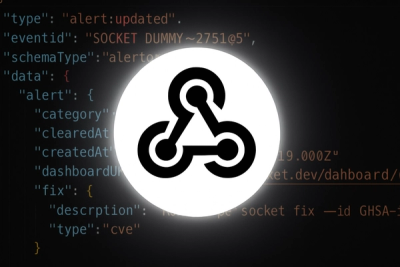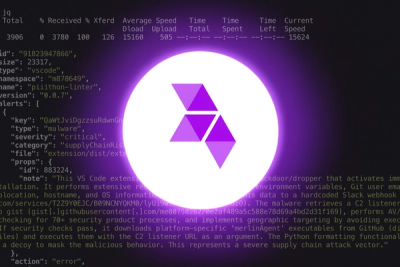
Product
Introducing Webhook Events for Alert Changes
Add real-time Socket webhook events to your workflows to automatically receive software supply chain alert changes in real time.
A restful, CORS enabled development server - for clicking around front end Javascript projects.
npm install headrest
Provides a RESTful, CORS enabled webserver intended for use when developing rest-backed Javascript apps for the browser. If you want to click around in your app, create/read/update/delete objects, but not fire up an entire backend, that is what this is for.
Assumes you init your JS app with or otherwise set an api root URL from which your models build the correct URL for their resource.
You can set the apiRoot like:
headrest = require('headrest')(apiRoot: '/apis/', dbPath: '/tmp/gruntest.json')
# headrest is an express app
headrest.listen(5001)
It assumes your resources have paths like:
/api/rocks or nested as deep as you
like - /api/rocks/ffeedc/sedimentaries and so on./api/rocks/ffeedc, also nested as far as you
want.Implements sessions at /api/session.
POST whatever you want to /api/session, you'll get a Cookie.
GET /api/session - HTTP 200 means you're logged in, 404 if not.
DELETE /api/session - removes your session record and sets your cookie
to expire.
headrest = require('headrest')(apiRoot: '/apis/', dbPath: '/tmp/gruntest.json')
module.exports = (grunt) ->
grunt.loadNpmTasks('grunt-contrib-connect')
grunt.registerTask('headrest',
[
'connect'
]
)
grunt.initConfig
connect:
headrest:
options:
port: 5001
hostname: "0.0.0.0"
keepalive: true
middleware: (connect, options) ->
[headrest]
grunt headrest
This will start the server on http://0.0.0.0:5001/. From a browser, you
can create an object with:
var request = $.ajax({
url: "http://localhost:5001/apis/rocks",
dataType: "json",
crossDomain: true,
type: 'POST',
data: {name: "sedimentary"}
})
request.done(function(d) {
var rock = JSON.parse(d)
console.log( rock.id )
})
// console output:
// > 7cf28fd544be1b7f55296c45d40538f
var request = $.ajax({
url: "http://localhost:5001/apis/rocks/7cf28fd544be1b7f55296c45d40538f",
dataType: "json",
crossDomain: true,
type: 'PUT',
data: {name: "Igneous"}
})
request.done(function(d) {
console.log('updated')
})
var request = $.ajax({
url: "http://localhost:5001/apis/rocks/7cf28fd544be1b7f55296c45d40538f",
dataType: "json",
crossDomain: true,
type: 'DELETE'
})
request.done(function(d) {
console.log('removed')
})
Fork and
npm install
npm test
or
cake test:watch
Or if any of this code is wack and you think there's a better way to do it, I definitely want to hear about it, no joke.
I yanked this idea from my homie Mark's footrest.py
FAQs
A restful, CORS enabled development server - for clicking around front end Javascript projects.
We found that headrest demonstrated a not healthy version release cadence and project activity because the last version was released a year ago. It has 1 open source maintainer collaborating on the project.
Did you know?

Socket for GitHub automatically highlights issues in each pull request and monitors the health of all your open source dependencies. Discover the contents of your packages and block harmful activity before you install or update your dependencies.

Product
Add real-time Socket webhook events to your workflows to automatically receive software supply chain alert changes in real time.

Security News
ENISA has become a CVE Program Root, giving the EU a central authority for coordinating vulnerability reporting, disclosure, and cross-border response.

Product
Socket now scans OpenVSX extensions, giving teams early detection of risky behaviors, hidden capabilities, and supply chain threats in developer tools.